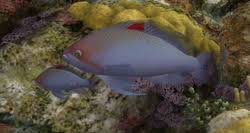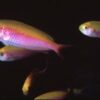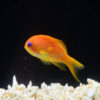The Connection Between Dragons and Moon Mythology: A Cosmic Bond of Power and Transformation

Throughout history, dragons have been prominent figures in many mythologies, often symbolizing power, mystery, and transformation. They are creatures that transcend cultures and continents, with a significant role in the lore of various civilizations. One of the most fascinating aspects of dragon mythology is its connection with the moon. In many cultures, dragons are not only linked to earthly elements like water and fire but also to celestial bodies, with the moon being one of the most symbolic and influential associations. This article explores the intricate and powerful connection between dragons and moon mythology, shedding light on the cosmic relationship between these mythical creatures and the moon across different cultural traditions.
The Moon as a Symbol of Mystery and Transformation
Before delving into the specific role of dragons in moon mythology, it’s essential to understand the symbolism of the moon itself. The moon is often associated with mystery, change, and transformation. Its phases, from the new moon to the full moon, represent cycles of renewal and growth, as well as periods of light and darkness. The moon’s ability to affect the tides, its connection to the night, and its visibility through changing phases make it a potent symbol of femininity, intuition, and cosmic energy.
In many ancient cultures, the moon was seen as a divine or supernatural force that governed the rhythms of life on Earth. It was often associated with deities of fertility, the harvest, and the supernatural. The moon was also seen as a boundary between the physical and spiritual realms, where it acted as a portal or mediator between gods and humans. As such, it’s not surprising that dragons—creatures with immense cosmic and elemental significance—would be intertwined with lunar mythology.
Dragons in Chinese Moon Mythology
In Chinese mythology, dragons are among the most revered and powerful beings, symbolizing strength, prosperity, and good fortune. Dragons are said to have control over the elements and are often seen as protectors of the natural world. Their connection to the moon in Chinese culture is most notably represented in the Mid-Autumn Festival, also known as the Moon Festival, which is held to celebrate the full moon.
According to Chinese legend, the dragon is closely connected with the moon through the figure of the Jade Emperor, the supreme ruler of heaven. The Jade Emperor’s dragon was believed to be a celestial creature that guided the moon across the sky. As the story goes, the dragon would ride the moon, ensuring its safe journey and illuminating the night sky with its celestial light.
Furthermore, in Chinese mythology, the moon is often personified by the Moon Goddess Chang’e, who lives on the moon after having consumed the elixir of immortality. While dragons do not directly interact with Chang’e in all stories, there are variations where the dragon plays a crucial role in helping her achieve her immortality or protect her from dangers. The dragon, with its cosmic power, often serves as a guardian figure, symbolizing the moon’s role as a protector of the human world from cosmic forces.
The full moon is a time when dragons are believed to be most powerful, and in some traditions, the moon is thought to be a manifestation of a dragon’s power. This connection between dragons and the moon speaks to the celestial nature of both, with the dragon often seen as a divine creature that ensures harmony in the universe.
The Role of Dragons in Lunar Eclipses
Lunar eclipses, which occur when the Earth passes between the sun and the moon, casting a shadow on the moon, have long been seen as powerful and mysterious events. Many cultures have myths and legends surrounding lunar eclipses, often associating them with dragons. In Chinese mythology, for example, it is said that a dragon devours the moon during a lunar eclipse.
This story of the dragon consuming the moon reflects the ancient belief that celestial events were caused by cosmic battles or disturbances. The dragon, in this case, represents a cosmic force that can influence the very movements of the moon, symbolizing both destruction and renewal. The imagery of a dragon devouring the moon is often depicted as a sign of imbalance or celestial unrest. However, just as the eclipse is temporary, the dragon’s hold on the moon is believed to be a passing event, after which the moon will reappear, brighter and more radiant than before.
The dragon’s role in lunar eclipses as a celestial devourer and restorer of balance also speaks to the cyclical nature of the moon’s phases. It reinforces the idea that just as the moon undergoes periods of darkness and light, so too does the dragon move between these phases, acting as both a destroyer and a restorer of cosmic equilibrium.
The Connection Between Dragons and the Moon in European Mythology
While dragons are more commonly associated with Eastern mythologies, they also hold significant meaning in European traditions, particularly in relation to the moon. In many European myths, dragons are seen as guardians of treasures or forces of destruction. However, their connection to the moon is often more indirect but still significant in the context of certain myths.
In some medieval European legends, dragons were believed to be creatures that were tied to the natural elements, including the moon. For example, in some versions of Arthurian legend, the knight Perceval encounters a dragon that is associated with the mystical powers of the moon. The dragon, in these stories, is a symbol of both wisdom and the moon’s hidden power. The dragon’s ability to navigate the night sky and guide travelers is often likened to the moon’s illumination of the darkness.
In the Norse tradition, the moon is personified by the god Máni, who drives the chariot that pulls the moon across the sky. While dragons are not directly associated with Máni, there are stories where dragons and other mythical creatures are connected to celestial events that include the moon. The cosmic forces that govern both the dragon’s existence and the moon’s movement are believed to be interconnected, reflecting the broader theme of cosmic harmony and balance.
The Moon as a Symbol of the Dragon’s Spiritual Transformation
The moon’s phases of waxing, full moon, waning, and new moon often reflect cycles of spiritual transformation and renewal. In many cultures, dragons are not merely physical beings; they also represent spiritual journeys and transformations. The moon, in its ever-changing cycle, mirrors this process of growth, death, and rebirth.
In Chinese astrology, dragons are considered symbols of vitality and spiritual energy, and their connection to the moon reinforces their role as agents of change. During the full moon, dragons are believed to be at the height of their power, and their energy is associated with spiritual awakening and enlightenment. The waxing and waning of the moon serve as metaphors for the dragon’s own cycles of power, growth, and transformation.
In some traditions, the dragon’s role as a cosmic being tied to the moon also suggests a deeper connection between the dragon and the feminine energy of the moon. The moon’s association with the feminine principle of intuition, wisdom, and nurturing is reflected in the dragon’s role as a guardian and protector of natural forces. The moon’s presence in dragon mythology serves to highlight the importance of balance between the masculine and feminine energies of the cosmos.
Conclusion: The Cosmic Bond of Dragons and the Moon
The connection between dragons and moon mythology is a powerful and enduring one, representing the cosmic forces of transformation, power, and balance. Whether through the dragon’s guardianship of the moon, its role in lunar eclipses, or its connection to the changing phases of the moon, these mythical creatures and celestial bodies are deeply intertwined in the fabric of many ancient cultures.
In both Eastern and Western traditions, dragons are seen as cosmic beings with the ability to influence the natural world, including the moon. The dragon’s connection to the moon reflects the ancient belief in the cyclical nature of life and the universe, where destruction and creation are part of a never-ending cycle of renewal. The moon, with its shifting phases, represents this process of transformation, and the dragon stands as a symbol of the dynamic forces that shape the cosmos.
As both a creature of myth and a symbol of cosmic power, the dragon’s association with the moon reminds us of the eternal dance between light and dark, growth and decay, and the harmonious balance that governs the universe. In the stories of these ancient cultures, the dragon and the moon continue to captivate our imaginations, offering us a glimpse into the mysteries of the cosmos and the transformative power that lies within both the celestial and the earthly realms.

